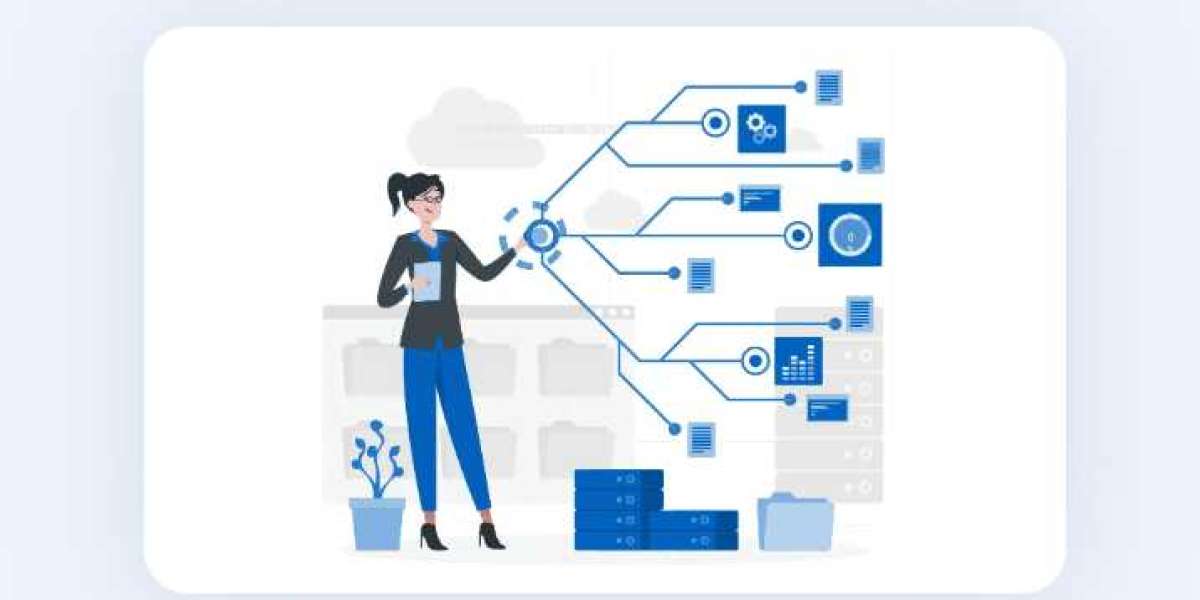Introduction
In today’s digital era, software product development is a critical component for businesses seeking to gain a competitive edge, innovate, and meet the ever-evolving needs of their users. The process of developing a software product involves a series of well-defined steps, methodologies, and practices that ensure the creation of high-quality, functional, and scalable software solutions. This guide delves into the key aspects of software product development, including the lifecycle stages, best practices, emerging trends, and strategic considerations.
The Software Product Development Lifecycle
Understanding the software product development lifecycle (SDLC) is crucial for managing and delivering successful software projects. The SDLC comprises several stages, each with its own set of objectives and deliverables. Here’s a detailed look at each stage:
1. Planning and Requirements Gathering
Objective: Define the scope and objectives of the software product. This stage involves understanding the problem to be solved, the target audience, and the specific features required.
Key Activities:
- Stakeholder Interviews: Engage with stakeholders to gather their needs, expectations, and pain points.
- Market Research: Analyze market trends, competitor products, and user preferences.
- Requirement Specification: Document functional and non-functional requirements, including performance metrics, security considerations, and scalability needs.
Best Practices:
- Define Clear Objectives: Ensure that the goals of the project are well-defined and align with business objectives.
- Involve Stakeholders: Engage all relevant stakeholders early to gather comprehensive requirements.
- Prioritize Requirements: Use techniques like MoSCoW (Must have, Should have, Could have, Won’t have) to prioritize requirements effectively.
2. Design
Objective: Translate requirements into a design blueprint that outlines how the software will be structured and how it will function.
Key Activities:
- Architectural Design: Define the software architecture, including system components, data flow, and integration points.
- UI/UX Design: Create wireframes and prototypes to visualize the user interface and user experience.
- Technical Specifications: Document technical details such as technology stack, database schema, and API specifications.
Best Practices:
- Adopt Design Patterns: Use proven design patterns to solve common problems and ensure maintainability.
- Focus on User Experience: Prioritize user-centric design to enhance usability and engagement.
- Iterative Prototyping: Develop and test prototypes to validate design choices and gather user feedback early.
3. Development
Objective: Build the software product according to the design specifications using coding practices and tools.
Key Activities:
- Coding: Write code based on design specifications using appropriate programming languages and frameworks.
- Integration: Ensure that different components of the software work together seamlessly.
- Version Control: Use version control systems (e.g., Git) to manage code changes and collaborate with the development team.
Best Practices:
- Follow Coding Standards: Adhere to coding standards and best practices to maintain code quality and readability.
- Conduct Code Reviews: Regularly review code to identify and fix issues early.
- Automate Testing: Implement automated testing to catch bugs and ensure code reliability.
4. Testing
Objective: Validate that the software meets the defined requirements and functions correctly across different scenarios.
Key Activities:
- Unit Testing: Test individual components to ensure they work as expected.
- Integration Testing: Verify that integrated components work together seamlessly.
- System Testing: Assess the complete software system to ensure it meets the requirements.
- User Acceptance Testing (UAT): Engage end-users to validate that the software meets their needs and expectations.
Best Practices:
- Test Early and Often: Integrate testing throughout the development process to identify issues early.
- Use Test Automation: Leverage automated testing tools to improve efficiency and coverage.
- Implement Continuous Testing: Ensure that testing is an ongoing process aligned with continuous integration practices.
5. Deployment
Objective: Release the software product to the end-users and ensure its smooth operation in the production environment.
Key Activities:
- Deployment Planning: Develop a deployment plan that outlines the steps and timeline for releasing the software.
- Environment Setup: Configure the production environment, including servers, databases, and network settings.
- Release Management: Coordinate the release process, including versioning, documentation, and user training.
Best Practices:
- Automate Deployment: Use continuous deployment tools to streamline the release process.
- Monitor Post-Deployment: Implement monitoring and logging to track the software’s performance and detect issues.
- Provide Support: Offer user support and maintenance to address any post-release problems.
6. Maintenance and Updates
Objective: Ensure the ongoing functionality, performance, and security of the software through regular updates and enhancements.
Key Activities:
- Bug Fixes: Address and resolve issues reported by users or identified through monitoring.
- Performance Optimization: Continuously improve the software’s performance and scalability.
- Feature Enhancements: Add new features and functionalities based on user feedback and market demands.
Best Practices:
- Adopt Agile Practices: Use agile methodologies to facilitate iterative updates and continuous improvement.
- Engage with Users: Collect user feedback to guide the direction of updates and enhancements.
- Prioritize Security: Implement security patches and updates to protect against vulnerabilities.
Best Practices in Software Product Development
To achieve success in software product development, adhering to best practices is essential. Here are some key practices to consider:
1. Adopt Agile Methodologies
Agile methodologies, such as Scrum and Kanban, promote flexibility, collaboration, and iterative development. By embracing agile practices, development teams can respond to changes more effectively and deliver value incrementally.
2. Focus on User-Centric Design
Designing software with the end-user in mind ensures that the product meets user needs and provides a positive experience. Conduct user research, create personas, and test prototypes to align the software with user expectations.
3. Implement Continuous Integration and Continuous Delivery (CI/CD)
CI/CD practices automate the integration, testing, and deployment processes, enabling faster and more reliable software releases. CI/CD helps maintain code quality, streamline development workflows, and reduce time-to-market.
4. Prioritize Security
Security should be integrated into every stage of the development process. Conduct regular security assessments, implement secure coding practices, and stay informed about emerging threats to protect the software from vulnerabilities and attacks.
5. Foster Collaboration and Communication
Effective communication and collaboration among team members, stakeholders, and users are vital for successful software development. Use collaboration tools, conduct regular meetings, and ensure transparency to keep everyone aligned and informed.
6. Utilize Metrics and Analytics
Tracking key metrics and analytics helps measure the performance and success of the software product. Monitor metrics such as user engagement, system performance, and defect rates to identify areas for improvement and make data-driven decisions.
Emerging Trends in Software Product Development
The field of software product development is constantly evolving, driven by technological advancements and changing user expectations. Here are some emerging trends to watch:
1. Artificial Intelligence and Machine Learning
AI and ML are increasingly being integrated into software products to enhance functionality and automate processes. From chatbots and recommendation systems to predictive analytics and natural language processing, AI and ML are revolutionizing software development.
2. Cloud Computing
Cloud computing provides scalable and flexible infrastructure for deploying and managing software applications. The adoption of cloud services, such as AWS, Azure, and Google Cloud, enables businesses to reduce costs, improve performance, and scale applications easily.
3. DevOps Practices
DevOps combines development and operations to streamline the software delivery process. By fostering collaboration between development and operations teams, DevOps practices improve efficiency, reduce deployment time, and enhance software quality.
4. Microservices Architecture
Microservices architecture breaks down software applications into small, independent services that can be developed, deployed, and scaled separately. This approach enhances flexibility, scalability, and maintainability, making it easier to manage complex software systems.
5. Low-Code and No-Code Development
Low-code and no-code development platforms allow users to create applications with minimal coding, using visual interfaces and pre-built components. These platforms accelerate development, empower non-technical users, and reduce the need for extensive programming skills.
6. Blockchain Technology
Blockchain technology provides a decentralized and secure way to manage data and transactions. Its applications extend beyond cryptocurrencies to include supply chain management, identity verification, and smart contracts, offering new opportunities for software development.
7. Edge Computing
Edge computing brings computation and data storage closer to the location where it is needed, reducing latency and improving performance. This trend is particularly relevant for applications requiring real-time processing, such as IoT devices and autonomous systems.
Conclusion
Software product development is a multifaceted and dynamic process that requires careful planning, execution, and continuous improvement. By understanding the lifecycle stages, adhering to best practices, and staying abreast of emerging trends, businesses can create high-quality software products that meet user needs and drive success.
Whether you are developing a new software product or enhancing an existing one, embracing agile methodologies, focusing on user-centric design, and leveraging modern technologies will position you for success in the ever-evolving world of software development.








